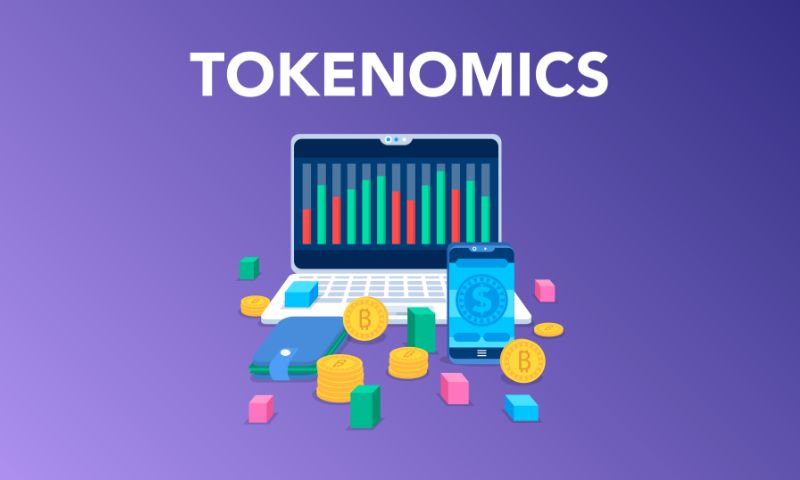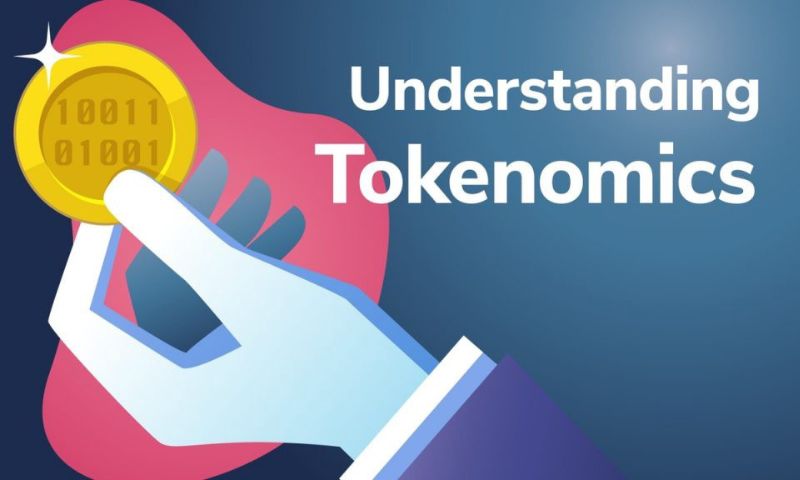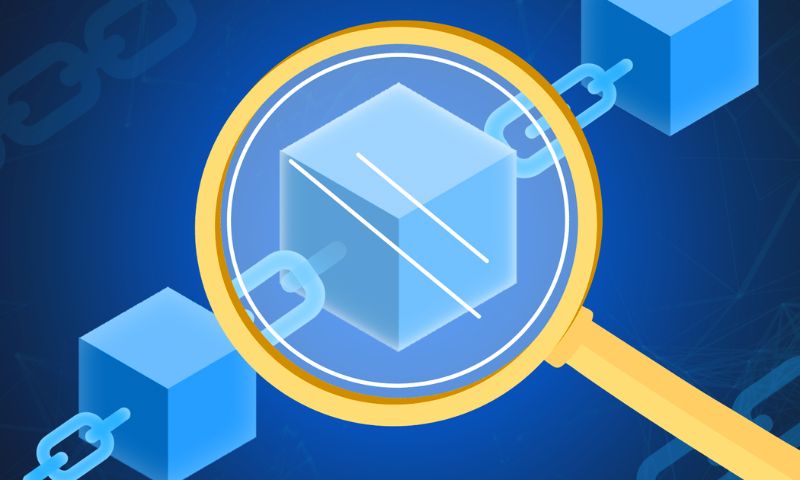Cryptocurrency tokenomics analysis is like unlocking a treasure chest. You’re about to dive deep into the secrets of digital cash flow. It’s not just about coins and trades. It’s a full-blown strategy game where every rule and tweak can shift wealth in big ways. You’ll learn how these digital assets really tick. We’ll start by cracking the code of token economics, showing you which tokens pack more punch – utility or security ones. Then, it’s all about market trends, how supply and demand can make or break token prices, and how to spot the real value in a sea of numbers. We’ll map out how smart token distribution keeps a crypto project strong. And finally, we’ll sail through choppy regulatory waters to see where the wild world of decentralized finance might head next. Ready to level up your crypto savvy? Let’s get started.
Deciphering the Basics of Token Economics
Explaining the Fundamentals of Tokenomics
Tokenomics combines ‘token’ and ‘economics’. It’s the study of how crypto tokens work within the broader ecosystem. Tokenomics considers the supply and role of tokens. This determines a token’s worth and growth potential.
Let’s start with token supply, which can be hard-capped or adjustable. Hard-capped supply, like Bitcoin’s 21 million coin limit, can make tokens more scarce. And scarcity can drive up price if demand is high. On the flip side, coins without a cap may risk losing value as more tokens join the supply.
Demand and price in tokenomics are closely tied. If a token has a strong use case or provides key network functions, demand might rise. If demand outpaces supply, price tends to go up. So, the use cases of a token are crucial. They can attract users and keep them invested, long-term.
Understanding tokenomics is also about knowing how tokens are given out or used. The rules are written into the blockchain via smart contracts. This tech makes sure token distribution is smooth and fair.
Comparing Utility Tokens and Security Tokens
Next, let’s look at utility tokens versus security tokens. Utility tokens offer access to services or products a project provides. Think of them as arcade tokens. They let you play the games, but you don’t own part of the arcade. A good utility token should be key to a project. The more useful it is, the higher the demand could be.
Security tokens are different. They’re like stocks in a company. They can give you a slice of the projects’ earnings or a vote on big issues. They’re tightly tied to financial rules and need to be handled with care.
A token’s impact on the market can depend on whether it’s seen as a utility or security token. Utility tokens might have more freedom but can still be risky if the project flops. Security tokens come with legal backing. But beware: they can seem less exciting because of all the rules they must follow.
Tokenomics and a project’s ecosystem are deeply linked. Each token has a role. It can be for payments, giving votes, or staking to earn more tokens. The design and planning of these roles can make or break a crypto asset.
Market cap plays a part in crypto analysis too. It gives us a quick snapshot of the token’s total value. You get it by multiplying the current coin price with the circulating supply. It helps us compare tokens and get a sense of scale.
All this talk about tokens might seem complex, but it’s like a game. To win, you need to understand the rules. That’s what tokenomics is: the rules of the game in the crypto world. The better you get them, the smarter you can play.
Analyzing Market Indicators in Crypto Asset Valuation
Unveiling the Impact of Supply and Demand on Token Price
The price of a crypto token depends a lot on supply and demand. When many want a token but it’s scarce, the price goes up. If plenty exists and few want it, the price drops. This is basic market logic.
Supply and demand in crypto are like see-saws. One side goes up, the other might go down. A token’s price changes with each move. Developers can limit how many tokens are out there. This is supply control. They can also add features to a token to make it more wanted. This is boosting demand.
Think about Bitcoin. It has a cap on its supply. That’s a hard limit of 21 million coins. This cap helps drive its high demand. People see it as digital gold. With only so many to go around, everyone wants a piece.
Now, meet utility tokens. They give users access to a service. Think of them as arcade tokens. You need them to play the game, which is the service they offer. The more useful the service, the more demand there might be.
But what about these tokens that don’t make you rich by just holding them? They’re called security tokens. They’re like stocks. The value comes from the success of the linked venture. But, utility tokens are not for direct profit. They are for using within their own blockchain project.
Assessing Market Cap and Circulating Supply
Ever heard of market cap in crypto? It’s the total value of a token out there. To find it, multiply the current price by the circulating supply. It tells us how big a crypto token is in the market. This can guide us when we choose where to put our money.
Circulating supply is how many tokens are out there for buying and selling. It’s part of the total supply, which is all tokens that ever will exist. But, not all of these are for sale right now. Some are held back, or “locked up”. Developers do this to help control a token’s price.
We also have what’s called initial coin offerings or ICOs. Here, developers sell tokens to raise money. The cash helps them build their project. If the ICO goes well and buyers trust the project, the price can soar.
A lot of factors shake up the value of a token. These include token burns, where tokens are destroyed to cut supply. Or, tokens might get released slowly, over time. This is called vesting. It stops too many tokens flooding the market at once.
Then we have things like staking. Here, people lock up tokens to help a network run smooth. They get rewards for it, kind of like interest in a bank. This can affect a token’s price by making it more desirable.
What’s exciting in crypto is how much you can dig into these details. It helps you see why prices move. By looking at supply, demand, and market cap, we can make smarter choices. We can look beyond the hype and really understand tokenomics. Seeing these market indicators can lead us down the path to digital wealth.
The Strategic Design of Token Distribution and Incentives
Constructing Effective Token Distribution Strategies
Let’s dive deep into token economics in crypto. Ever play a game where you earn gold for quests? Crypto works like this too, but there’s more at stake. Just like you need a good plan to win the game, projects need smart token distribution strategies. Think of tokens as special keys that can open many doors. They can let you use a service, vote on decisions or even earn more tokens! But how these keys are shared out makes a big difference.
When you get tokens early in a game, you feel special, right? It’s the same in crypto. Giving tokens to early supporters rewards them and can help spread the word. This is one part of understanding tokenomics. It’s like planting seeds; you need to spread them right, so they grow well.
Now, if too many tokens flood the market fast, their value might drop. So, some projects limit how many tokens they give out. This is called a hard cap. It’s like having a max number of game gold that can be earned. It helps keep the token rare and might increase its value.
Aligning Token Vesting with Long-Term Value Creation
But it’s not just about making a token scarce. We want it to grow in value over time. This is where token vesting comes in. Vesting is like a prize you can’t fully use right away. You might get it bit by bit, as you keep playing the game.
In crypto, vesting means those who get tokens early usually can’t sell them all at once. They have to wait, sometimes for years. This makes them think long term. They’re more likely to help the project grow, not just make a quick buck.
So, why does this matter? Because in the big world of blockchain, we want projects to last. To do that, tokens need to bring long-term value. Not just quick rewards. This is what good tokenomics is about—making sure tokens help the project and the people. Long-term value keeps people using the tokens. Then, more people want them, and their value can go up.
To sum it up, tokens are like the lifeline of crypto projects. They should reward, but also inspire work towards shared goals. Just like getting better at a game, it takes time and effort. But the rewards? They can be truly amazing.
And don’t forget, this isn’t just about making money. It’s about building something that lasts. With smart distribution and vesting, tokens can help make sure the world of crypto keeps growing strong. And that’s a game we all want to win.
Regulatory Influence and Future of Tokenomics in DeFi
Navigating Through Tokenomics in Light of Evolving Regulations
In crypto, rules shape how we trade and hold tokens. Understanding tokenomics means knowing the big picture – how new laws can change the game. Imagine a world where tokens grow on digital trees, and the rules are the gardeners. They can prune or water our wealth.
Here’s the deal: token economics in crypto link to these regulations. So when a country says thumbs up or thumbs down, it can make prices dive or soar. Yes, even one small rule change can nudge a token from zero to hero, or the other way round.
Why does this matter? Because smart cookie investors like us want to know where our digital dough might go. Let’s chat about a big word – “compliance”. This means playing by the rules, or else we might face tough luck. A project that high-fives with the law is a project that stays sturdy and sound.
Rights in tokens matter too. Not superpowers, but something like it – governance rights. This is a fancy talk for having a say in what goes down in a project. The more you hold, the louder your voice. It’s like a school council but for money moves.
Now, what about Initial Coin Offering (ICO) tokenomics? This is the A to Z of token birth. It’s where you get in early, but with great power comes… you know the rest. ICOs must bow to the law, and that shapes their value like clay.
Dive deep, and you’ll spot two big players in the token game – utility tokens and security tokens. The first one’s a tool, and the other’s more like a promise for cash back. And of course, the rule book for each is thicker than a triple decker sandwich.
Changes in these laws are like the weather in Crypto-land. They can be bright and sunny or oh-so-stormy. Knowing how to dance in the rain or bask in the sunshine – that’s what makes a pro.
Predicting the Path of DeFi Tokenomics and Governance Rights
Let’s hop on our crypto future bike and speed down the path of DeFi tokenomics. It’s not all flat roads here – there are twists and turns. But fear not, for we can look ahead and guess where the signs point.
Governance rights in tokenomics are like the steering wheel. They let folks turn the project left or right. If your hands are on the wheel, congrats – you’re in control.
If you park your coins in DeFi, you might earn staking rewards. Think of it as your slice of the pie for dropping your coins in the pool. Just like a baker’s secret recipe, these rewards can spice up the value of your slice.
But wait, there’s more. We’ve got deflationary vs. inflationary tokens in this ride. It’s the battle of more or less – more coins, price might drop; fewer coins, price might pop.
Want to win at this game? You gotta understand the use cases and token value. A token that helps you do cool things can be worth more than online Monopoly money. That’s called utility, and it makes your tokens more than just digital shiny stuff.
And remember, these predictions aren’t written in the stars. They’re written in code, in smart contracts, and on graphs that go zig-zag. Strap on your helmet, and let’s ride this road together, spotting the signs as we zoom along the digital highway of DeFi.
In this post, we’ve broken down token economics, showing you the core ideas behind tokenomics, including how utility and security tokens differ. We looked at how supply and demand, along with market cap and circulating supply, play vital roles in crypto value. We explored strategies for token distribution and how token vesting can drive long-term value.
Lastly, we tackled the heavy impact of regulations on tokenomics and the future of DeFi. Token economics is more than just numbers; it’s about thoughtful design and understanding the evolving rules of the game. The road ahead for DeFi and tokenomics is exciting, and staying informed will be key for anyone involved in this space. Remember, the world of crypto moves fast—keep learning, keep adapting, and you’ll navigate it like a pro.
Q&A :
What is the importance of tokenomics in cryptocurrency?
Tokenomics refers to the economic principles and attributes that give a cryptocurrency its value and drive its adoption. A well-crafted tokenomics structure can ensure scarcity, incentivize holders, and establish utility, directly impacting the long-term viability and success of a cryptocurrency. Analyzing tokenomics is crucial for investors to understand the potential growth and risks associated with a digital asset.
How does tokenomics affect the value of a cryptocurrency?
The value of a cryptocurrency is greatly influenced by its tokenomics, which encompasses the total supply, distribution mechanisms, and utility. Factors like hard caps on supply can create scarcity, which might increase value. Additionally, how tokens are distributed, e.g., through mining, staking, or airdrops, also affects their perceived value. Analyzing these elements can predict demand and thus the potential appreciation.
What should I look for in a good tokenomics model?
When analyzing a cryptocurrency’s tokenomics, consider the total token supply, the release schedule, and how tokens will be used. Look for a clear utility that supports demand, such as governance rights, transaction discounts, or rewards. Also, check the distribution of tokens among founders, developers, and the community, as equitable distribution can lead to a more stable and healthy ecosystem.
How do you conduct a cryptocurrency tokenomics analysis?
To perform a tokenomics analysis, start by reviewing the project’s whitepaper and understanding the purpose of the token. Examine the supply details, including the maximum supply and any inflation or deflation mechanisms. Assess token distribution, how it is used within the ecosystem, and what incentives are in place for stakeholders. Evaluating these factors will give you insight into the project’s sustainability and investment potential.
Can changes in tokenomics affect existing holders of a cryptocurrency?
Yes, changes in tokenomics can significantly impact existing holders. If the rules around supply, distribution, or utility are altered, it can lead to shifts in supply and demand dynamics, affecting the token’s price. For instance, a decision to burn a portion of the supply can increase scarcity and potentially raise the price, benefiting holders. Always stay informed about any proposed changes in a project’s tokenomics.






